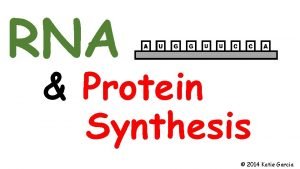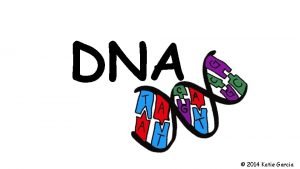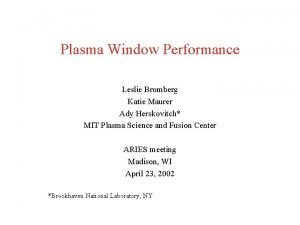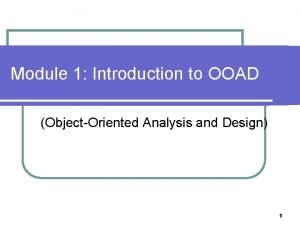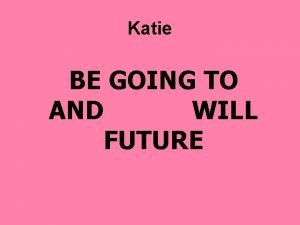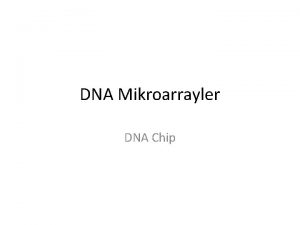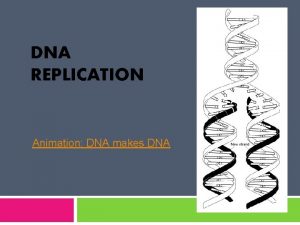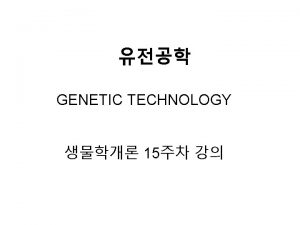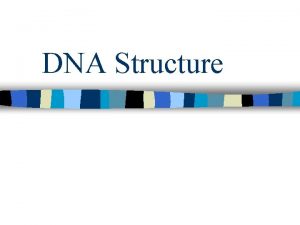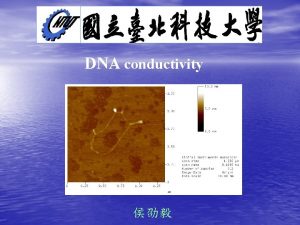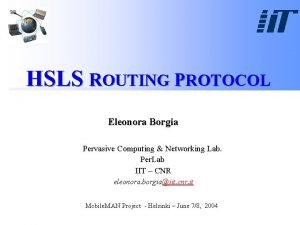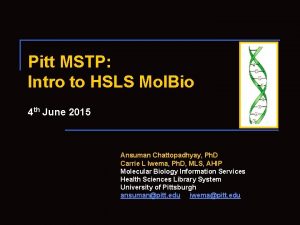DNA 2014 Katie Garcia HSLS 1 1 HS




















- Slides: 20

DNA © 2014 Katie Garcia

HS-LS 1 -1 HS. Structure & Function Construct an explanation based on evidence for how the structure of DNA determines the structure of proteins which carry out the essential functions of life through systems of specialized cells. (Assessment Boundary: Assessment does not include identification of specific cell or tissue types, whole body systems, specific proteins structure and functions, or the biochemistry of protein synthesis) © 2014 Katie Garcia

What is DNA? -DNA stands for Deoxyribonucleic Acid (DNA) © 2014 Katie Garcia

What is it important? -it contains the blueprint of life -it contains all of an organism’s genetic code, thus it has the instructions for making an organism and its proteins. © 2014 Katie Garcia

Proteins -Proteins are very important and each protein has a specific role üsome control the rate of reactions ühelp fight diseases üregulate cell processes ühelp form bones and muscles ütransport substances in and out of cells © 2014 Katie Garcia

Where can DNA be found in cells? • prokaryotes (ex: bacteria) –floating around in cell • eukaryotes (ex: plants, animals) –inside nucleus © 2014 Katie Garcia

Where is it stored? -in chromosomes, which contain all the genetic material • gene – a segment of a chromosome that codes for a protein (in other words it’s a stretch of DNA), which in turn codes for a trait (like hair & eye color) © 2014 Katie Garcia

Understand: -if you unraveled a chromosome, you would see the structure of DNA © 2014 Katie Garcia

Structure of DNA -Watson and Crick discovered DNA shape was that of a double helix (looks like a twisted ladder) after looking at an x-ray diffraction image that was created by Rosalind Franklin -it has two strands -it is made up of repeating subunits called nucleotides © 2014 Katie Garcia

Nucleotide -consist of 3 components 1. ) Sugar = Deoxyribose 2. ) Phosphate 3. ) Nitrogen base - Adenine (A) - Thymine (T) - Guanine (G) - Cytosine (C) © 2014 Katie Garcia

Nucleotide -DNA’s backbone (or the sides) are made up of alternating sugar and phosphate -Sugar is always attached to a nitrogen base -One nucleotide is attached to another © 2014 Katie Garcia

nucleotide – a piece to build a DNA molecule if you have a smartboard, move the nucleotide pieces and show students how it is assembled! © 2014 Katie Garcia

DNA is Double Stranded -Recall DNA is double stranded -One strand is bonded to the other strand by weak hydrogen bonds © 2014 Katie Garcia

© 2014 Katie Garcia

Complementary Base Pairing -The nitrogen bases of one strand pair with specific bases on the other stand (complementary base pairing) §Adenine (A) always pairs with Thymine (T) §Guanine (G) always pairs with Cytosine (C) © 2014 Katie Garcia

Base Arrangement The way your nitrogen bases are arranged codes for your traits For example A-G-C-T-A-T C-G-T-A-A-G might code for brown eyes might code for blue eyes This is a simplified explanation of how DNA codes for your traits (note: it’s a little more complicated than this but at least you get the idea). © 2014 Katie Garcia

DNA Replication -DNA making a copy of itself -Why does DNA need to make a copy of itself? Well, think of a growing child. How does the child grow? New cells have to be made and remember cells contain DNA. © 2014 Katie Garcia

DNA Replication ALSO when we……………… üreproduce (pass on our genetic material to our children) üinjury ourselves (like if you cut your arm your body responds by making new cells to repair the wound) So it is important that DNA replicates. DNA makes a copy of itself right before a cell divides © 2014 Katie Garcia

DNA Replication During DNA replication § the DNA molecules separates into two strands § then produces two new complementary strands following the rules of base pairing § each strand of the double helix of DNA serves as a template, or model, for the strand At the end of replication § each DNA molecule resulting from replication has one original strand one new strand § because of this, DNA is semi-conservative © 2014 Katie Garcia

© 2014 Katie Garcia
 2014 katie garcia
2014 katie garcia Hs ls 1-1
Hs ls 1-1 Replication process
Replication process Replication
Replication Dna and genes chapter 11
Dna and genes chapter 11 Bioflix activity dna replication lagging strand synthesis
Bioflix activity dna replication lagging strand synthesis Coding dna and non coding dna
Coding dna and non coding dna Katie bouman nobel prize
Katie bouman nobel prize Katie bell minneapolis
Katie bell minneapolis Katie rossini
Katie rossini Katie schoultz
Katie schoultz Katie maurer
Katie maurer Enriques journey map
Enriques journey map Introduction to ooad
Introduction to ooad Katie be
Katie be Katie sigmoid
Katie sigmoid Katie kraska
Katie kraska Katie knight author
Katie knight author Katie's trunk
Katie's trunk Katie clean theme
Katie clean theme Katie roloff
Katie roloff
